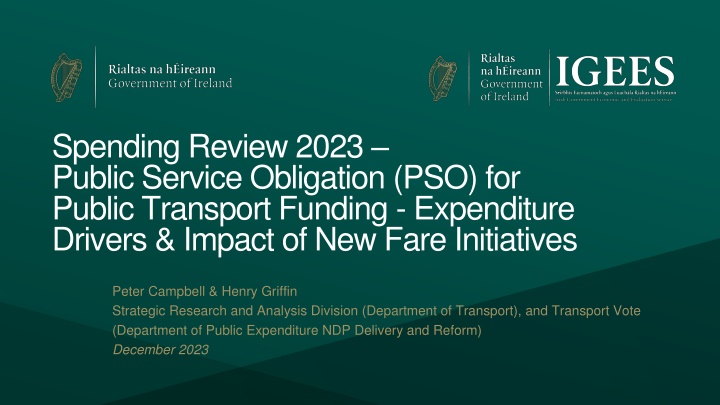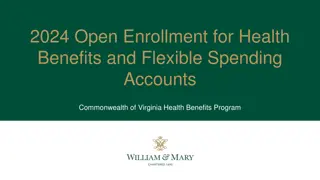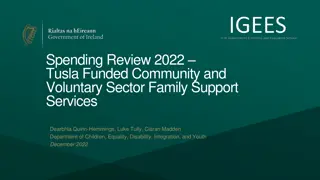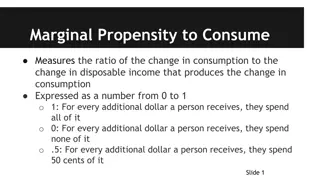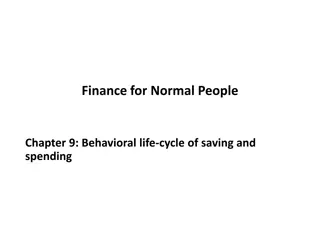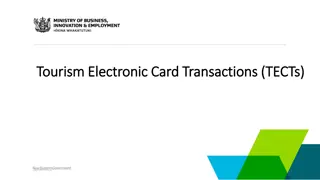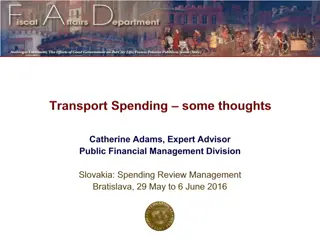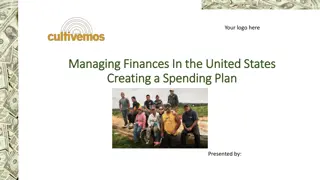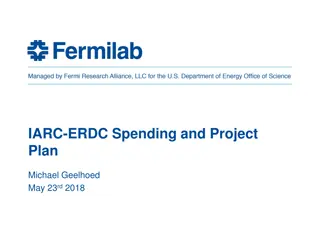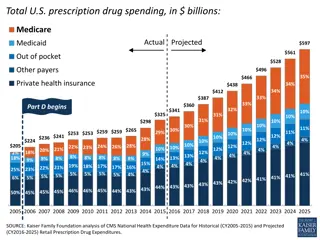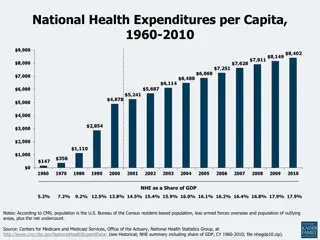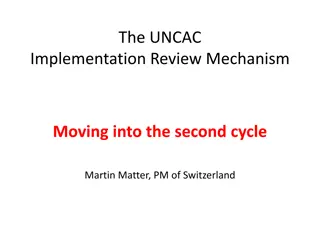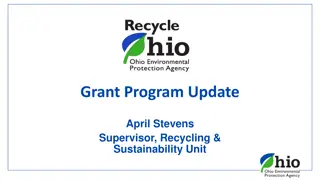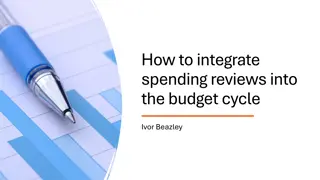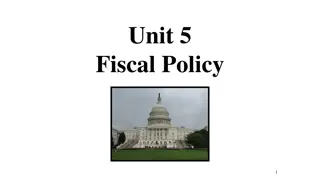Spending Review 2023
This report analyzes the effect of recent fare initiatives on public transport funding, including changes in passenger numbers, revenue intake, and average fares. The findings reveal shifts in travel patterns post-pandemic and the financial implications for operators and government funding allocation decisions.
Download Presentation

Please find below an Image/Link to download the presentation.
The content on the website is provided AS IS for your information and personal use only. It may not be sold, licensed, or shared on other websites without obtaining consent from the author.If you encounter any issues during the download, it is possible that the publisher has removed the file from their server.
You are allowed to download the files provided on this website for personal or commercial use, subject to the condition that they are used lawfully. All files are the property of their respective owners.
The content on the website is provided AS IS for your information and personal use only. It may not be sold, licensed, or shared on other websites without obtaining consent from the author.
E N D
Presentation Transcript
Spending Review 2023 Public Service Obligation (PSO) for Public Transport Funding - Expenditure Drivers & Impact of New Fare Initiatives Peter Campbell & Henry Griffin Strategic Research and Analysis Division (Department of Transport), and Transport Vote (Department of Public Expenditure NDP Delivery and Reform) December 2023
Impact of New Fare Initiatives on the PSO for Public Transport Funding Overview, Aims, & Objectives Overview To assess the impact of the 2021/2022 fare initiatives on PSO fare revenue, passenger numbers, and average fare for each of Dublin Bus, Bus ireann, Luas, and Irish Rail in 2022/23 compared to 2019, the last full calendar year unaffected by the pandemic. Fare initiatives introduced include: o The 90-minute fare (November 2021); o The 20% fare reduction (April 2022); and o The Young Adult Card (YAC) providing 50% fare reduction for 19- to 23-year-olds (May 2022). Aims and Objectives Ideally the paper will inform future policy decisions about transport fares charged and costs which can then be used to inform the Government in PSO resource-allocation decisions as part of future Budget negotiations. 2 Rialtas na h ireann | Government of Ireland
Impact of New Fare Initiatives on PSO for Public Transport Funding Key Findings Key Policy Relevant Findings There were 13.4 million more fare-paying (cash and Leap) passengers between May 2022 and April 2023 (193.1m) compared to 2019 (179.7m), but 600k fewer passengers when product tickets such as TaxSaver are factored in (206.6m in 2019 versus 206m in 2022/23). Overall, total passenger numbers increased on three of the four operators compared to 2019. Monthly totals are higher since September 2022, but Irish Rail passengers were still below 2019 levels as of April 2023. The trend shows that passenger numbers are increasing on a month-by-month basis for three of the four operators compared to the same periods in 2019. Changes in travel patterns after the pandemic need to be factored in when assessing passenger numbers and can potentially help to explain the low Irish Rail numbers and lower product ticket sales for all operators. 3 Rialtas na h ireann | Government of Ireland
Impact of New Fare Initiatives on PSO for Public Transport Funding Key Findings Key Policy Relevant Findings The average fare for the 4 main operators was 1.85 in 2022/23, down by 89c compared to 2019 ( 2.74). Revenue intake from all ticket types was 390m in 2022/23 which was 33% lower ( 189.2m) compared to 2019 ( 579.2m). This was partially caused by average fare being lower, and product tickets being less economical as hybrid working has changed travel patterns. The cost per passenger has increased by 1.03 (27%) between 2019 and 2023 due to new services rolled out (e.g., BusConnects) and cost of living increases caused by inflation. Coupled with lower average fare this means the funding requirement for each passenger has risen by approximately 2 from 2019 to 2023. Fundamentally, the trend shows fare paying passenger numbers are higher than 2019, and overall passengers are increasing month-on-month, but the reduced fares, along with changes in travel patterns and increased costs (particularly due to inflation but also due to the roll-out of new services) has meant the gap between fare revenue intake and Exchequer funding for the PSO has increased substantially since 2019. 4 Rialtas na h ireann | Government of Ireland
